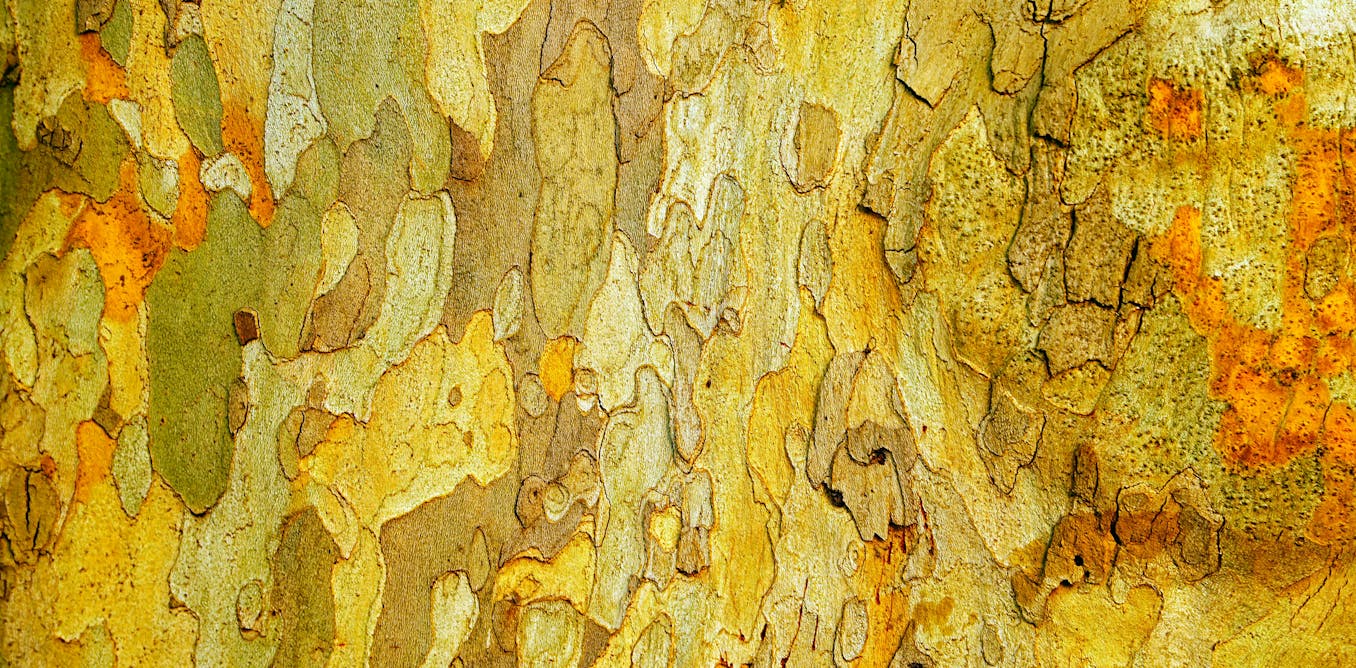A version of this essay originally appeared in Reframed, the Art in America newsletter about art that surprises us and works that get us worked up. Sign up here to receive it every Thursday.
In Melissa Cody’s 2014 weaving Good Luck, a figure known as Rainbow Man is represented as an electrical cord, his lower half culminating in a two-pronged plug. His tubular body encircles the phrase GOOD LUCK, and beneath those words, there’s a somewhat unexpected motif, formed from four right angles that meet at a central point.
Navajo viewers will understand the symbol as a whirling log, which connotes Good Luck’s titular well wishes. But to many other viewers, the symbol will likely read as a swastika. There are differences between the two symbols: a whirling log’s four angles form a square, whereas a swastika is rotated 45 degrees, creating a diamond. But those differences are subtle and easy to miss. That’s why it’s worth spending time with Cody’s whirling logs, which figure in two current New York solo shows, at MoMA PS1 and Garth Greenan Gallery.
At PS1, Navajo Transcendent (2014) shows a lone whirling log popping against a teal background. Cody rendered the ancient symbol in a pulsating pattern derived from traditional Navajo weaving that’s known as an eye dazzler: here and elsewhere, she is emphasizing the symbol’s cultural origins. In Navajo Transcendent, she has caused the sign to appear three-dimensional, rendering it with depth, as if to suggest that there are multiple vantages from which to view this symbol, both formally and culturally. Certainly, with its dazzling colors and dizzying patterns, this work contains none of the austerity or threat associated with Nazi regalia.
I’ll admit that, as a Jew, I don’t always find Cody’s works featuring this easy to take, and it seems I’m not alone in feeling that way. When I visited PS1, I overheard two visitors debating Navajo Transcendent, noting that the work is presented without a trigger warning. The institution seemed uncomfortable in its handling of the work as well. It showed the piece alongside a wall text that does not include words like “swastika” or “Nazis,” words that feel like elephants in the room. In that wall text, viewers are directed to a label for a different piece, Navajo Whirling Log, should they seek “additional context.” The text for Navajo Whirling Log notes that “misassociations with the Nazi swastika” may occur, and reminds viewers that Navajo culture “predates Nazi atrocities by millennia.” This is a fact—but so is the continued prevalence of swastikas wielded in hateful ways. It is hard not to see a Nazi symbol here.
That’s partly why, in 1940, Navajo, Papago, Apache, and Hopi leaders signed the Whirling Log Proclamation, formally agreeing to stop using the symbol. They noted that the motif had been “desecrated recently by another nation of peoples.” That excerpt appears in an explanatory text posted at Garth Greenan Gallery’s front desk, but this necessary context is mysteriously absent within PS1’s galleries. That text also states that the leaders signed the proclamation under pressure from the US government, and points out that anyway, Navajo religious practices were banned in the US until the American Indian Religious Freedom Act passed in 1978. In the intervening decades, Cody and other contemporary Navajo artists have endeavored to revive the whirling log, asking why one connotation should supplant another. Several have been met with protests, such as when, in 2017, a Washington art space removed works by Steven Leyba that featured whirling logs after backlash.
Cody’s whirling logs do make me uncomfortable, but that doesn’t mean her works that feature them should be taken down. Her tapestry Navajo Whirling Log (2019), at PS1, features four such logs that touch their tips, forming a cross at the work’s center. The cross is a symbol for the Spider Woman who, according to Navajo tradition, wove the universe into being. Anyone who views this piece as representing four swastikas, then stops there, is likely to miss out on that rich story. Art often shows us how many signs have more than one meaning, and if we keep an open mind—and, maybe, get uncomfortable—we might learn to see things anew.

The post “Navajo Artist Melissa Cody Reclaims a Sacred Symbol That the Nazis Weaponized” by Alex Greenberger was published on 06/07/2024 by www.artnews.com





































